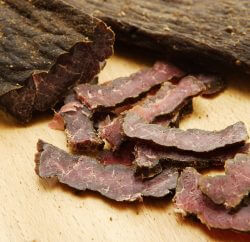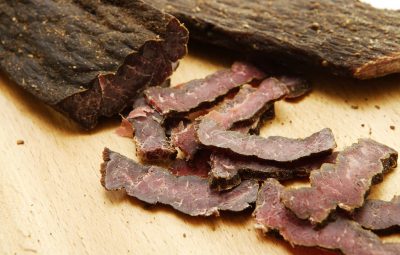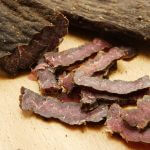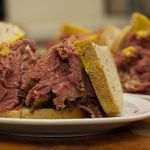 For the uninitiated, restaurant menus for steaks can be a bit difficult to understand. While everyone knows that it is basically a list of meat dishes, the terms used can sometimes leave a few people confused.
For the uninitiated, restaurant menus for steaks can be a bit difficult to understand. While everyone knows that it is basically a list of meat dishes, the terms used can sometimes leave a few people confused.
The use of jargon or specialized language is a way for cultures like the steak community to preserve their pedigree and separate insiders from outsiders. Steakhouse jargon may seem like a secret code, but the fact remains that you need to decipher it correctly if you want to make the right order of steak.
In this article, you will learn some of the most basic terminologies on the different cuts and doneness of typical dishes listed on steak menu selections to help you enter the seemingly exclusive steakhouse circle.
8 Types of Cuts
Naming the different cuts is probably one of the most confusing parts of eating a steak; but really, there is nothing to it. Basically, cuts are divided into three sections: the rib, the short loin, and the sirloin.
Below are eight examples of steak cuts you may encounter in most steakhouse menus:
1. Chateaubriand
The Chateaubriand is a tender piece of beef that is taken from the bigger end of the tenderloin. It is traditionally served in a sauce with the same name concocted from shallots, white wine, tarragon, lemon juice, and butter.
2. Cote de Boeuf
This is a large rib steak cooked by roasting or pan-searing and is usually dry-aged first before being exposed to heat. Because of its size, this meaty cut can be enjoyed by at least two people.
3. Filet Mignon
Named according to the literal translation of “tender filet,” filet mignon is a cut taken from the smaller part of the tenderloin. It is a popular though pricey choice for people who want a juicy and tender steak.
4. New York Strip
The New York Strip is tender cut from the beef’s short loin. It is also famous for the monikers “Kansas City strip steak” or simply “strip steak.”
5. T-Bone
The T-bone is cut from the meat around the T-shaped bone in the short loin. This steak cut is probably one of the most popular among steak lovers.
6. Porterhouse
A porterhouse steak is a type of T-bone that comes from the large part of the tenderloin and a piece of the top loin. Like the T-bone, the porterhouse is a very popular choice among diners.
7. Hanger Steak
Also known as the “butcher’s steak,” the hanger steak is cut from the plate of the cow and is usually not for sale as butchers prepare it for themselves.
8. Prime Rib
The prime rib is a flavorful cut taken from the rib section of the cow. It is typically prepared by dry heating and slow roasting.
Manner of Cooking and Preparation
Aside from the cut, most restaurants and steakhouses also indicate the doneness of steak in the dishes in their menus. Doneness can be checked by “feeling” meat firmness or by noting the color of the meat on the edges and the center.
Well Done
People who aren’t used to steak often opt for their piece to be cooked well done. Usually characterized by a grey or brown hue throughout the meat, this is considered the most challenging way to cook steak because it requires slow cooking to prevent charring.
Medium Well
Medium well steaks are made for people who cannot bear to eat uncooked or partially cooked meat. It has a slightly pink core and thick grey or dark brown edges. In terms of firmness, it can be very stiff but still has a little bit of squishiness along the center.
Medium
Medium cooked steak is a popular choice for most people, veteran steak eaters or not. After it is grilled, this type of steak is left with grey or brown sides, a charred top and bottom, and a pinkish center. Unlike medium well steaks, this type of doneness leaves the bigger part of the meat core pink.
Medium Rare
Steak cooked medium rare will have brownish seared edges and a pink middle that leads to a reddish core. It is arguably the most popular choice for most steak lovers and chefs alike. When served, medium rare steak must be warm through the center and have a firmness that will spring back quickly when touched.
Rare
Rare steak is characterized by a red core and pinkish edges that have grill marks seared on the outside. It is usually served slightly warm through the center and is the usual choice for carnivores who like their meat very slightly cooked.
Black and Blue
Veteran steak lovers call nearly raw steak “black and blue.” It got the name from its charred exterior that is a result of quick, high-heat grilling which explains “black”. “Blue” describes the rest of the steak which is left raw after grilling.
Welcome to the Steakhouse Circle
Eating steak has become quite an enjoyable experience for many people. Not only is it perfect for almost any occasion – from casual Friday brunches to more elegant gatherings, but it is also a great way to flaunt your love for food.
If you know what the different names of steak dishes actually mean, you will be less likely to make any mistakes when placing your orders and, ultimately, get the best steakhouse experience possible.
AUTHOR BIO
Chiara Bisignani is the F&B Marketing Executive at Saadiyat Beach Club. She oversees website maintenance, PR requests, marketing initiatives and all general guests’ enquiries for the company’s destinations of KOI Restaurant & Lounge, Boa Steakhouse and Caramel Restaurant and Lounge in Abu Dhabi.

















